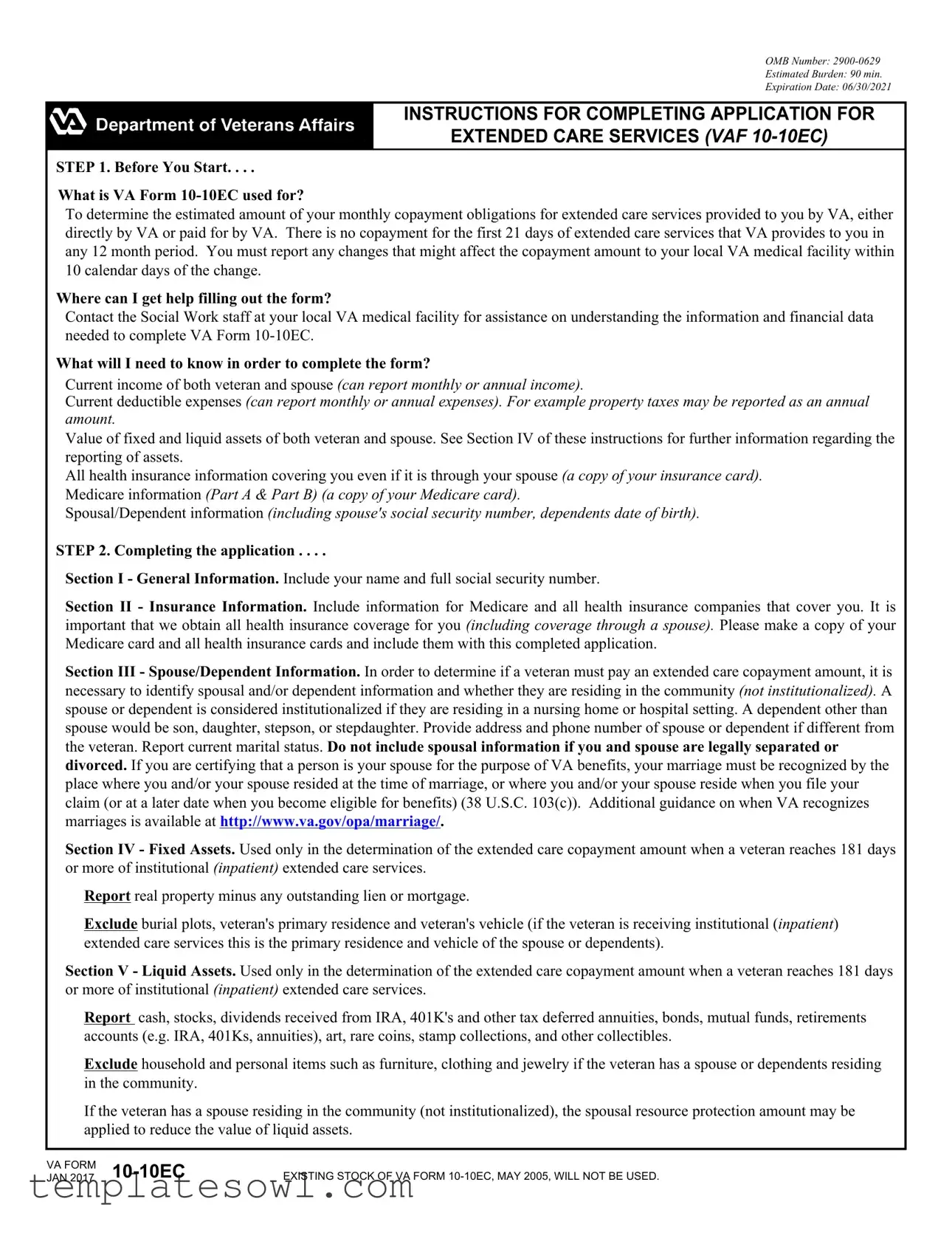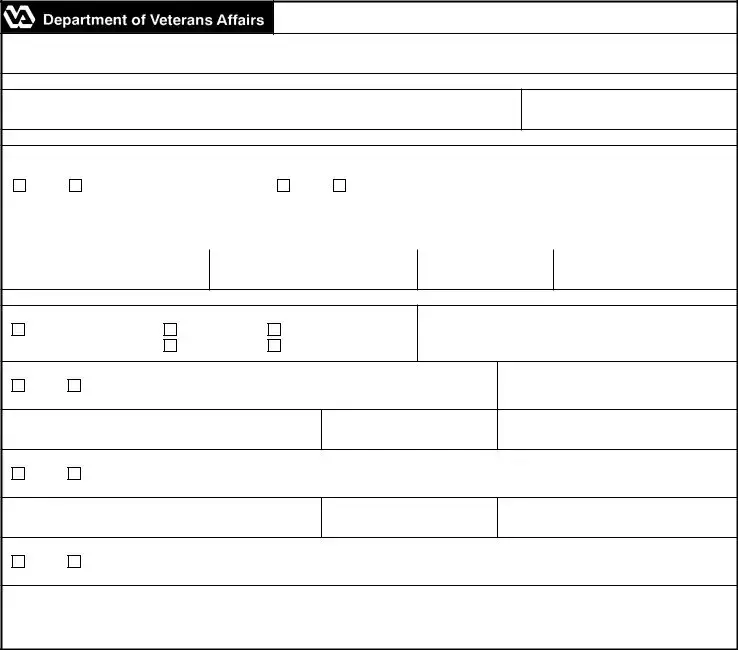Section VI - Current Gross Income of Veteran and Spouse. Do not include income from dependents.
Report wages, bonuses, tips, severance pay and accrued benefits
Report income from a business (minus business expenses)
Report cash gifts, inheritance amounts, intrest income, and the standard dividend income from non tax deferred annunities.
Report retirement income and pension income.
Report unemployment payments, worker's compensation payments, black lung payments, tort settlement payments, social security payments, and court mandated payments.
Report payments from VA or any other Federal programs, and any other income.
Exclude income of the Veteran's dependents.
Section VII. Expenses. Not used in the determination of the extended care copayment amount when a veteran reaches 181 days or more of institutional (inpatient) extended care services and does not a have a spouse or dependents residing in the community (not institutionalized).
Report basic subsistence (living) expenses.
Include any educational expense incurred by the veteran, spouse or dependent.
Include any funeral or burial expenses for your spouse or dependent as well as any prepaid funeral or burial arrangements for yourself, spouse, or dependent.
Include rent or mortgage payment for primary residence only.
Include amount paid for utilities (electricity, gas, water or phone). You can calculate the amount by using the average monthly expenses during the past year for your utilities.
Include car payment for one vehicle only.
Include amount spent for food for veteran, spouse or dependent.
Include non-reimbursed medical expenses paid by you or your spouse. Include expenses for medical and dental care, medications, eyeglasses, Medicare, medical insurance premiums, medical copayments and other hospital or nursing home expense.
Include court ordered payments such as alimony or child support.
Include insurance premiums such as automobile and homeowners. Exclude life insurance premiums.
Include taxes paid on property and average monthly expense for taxes paid on income over the past 12 months.
STEP 3. Submitting your application
What do I do when I have finished my application?
1.Read Section VIII, Consent for Assignment of Benefits, Section IX, Consent to Agreement to Make Copayments, and Section X, Privacy Act and Paperwork Reduction Act Information.
2.In Section VIII and Section IX, you or an individual to whom you have delegated your Power of Attorney must sign and date.
3.Attach any documentation such as copies of Medicare and other health insurance cards, and your Power of Attorney documents to your application.
4.Return the original form and supporting documentation to the Social Work staff at your local VA medical facility.
STEP 4. Finding out what my Extended Care Copayment Amount will be.
Once the VA Form 10-10EC is completed, the Social Work staff at your local VA medical facility will counsel you, or an individual to whom you have delegated your Power of Attorney, on your estimated monthly copayment obligations for the requested extended care services.





